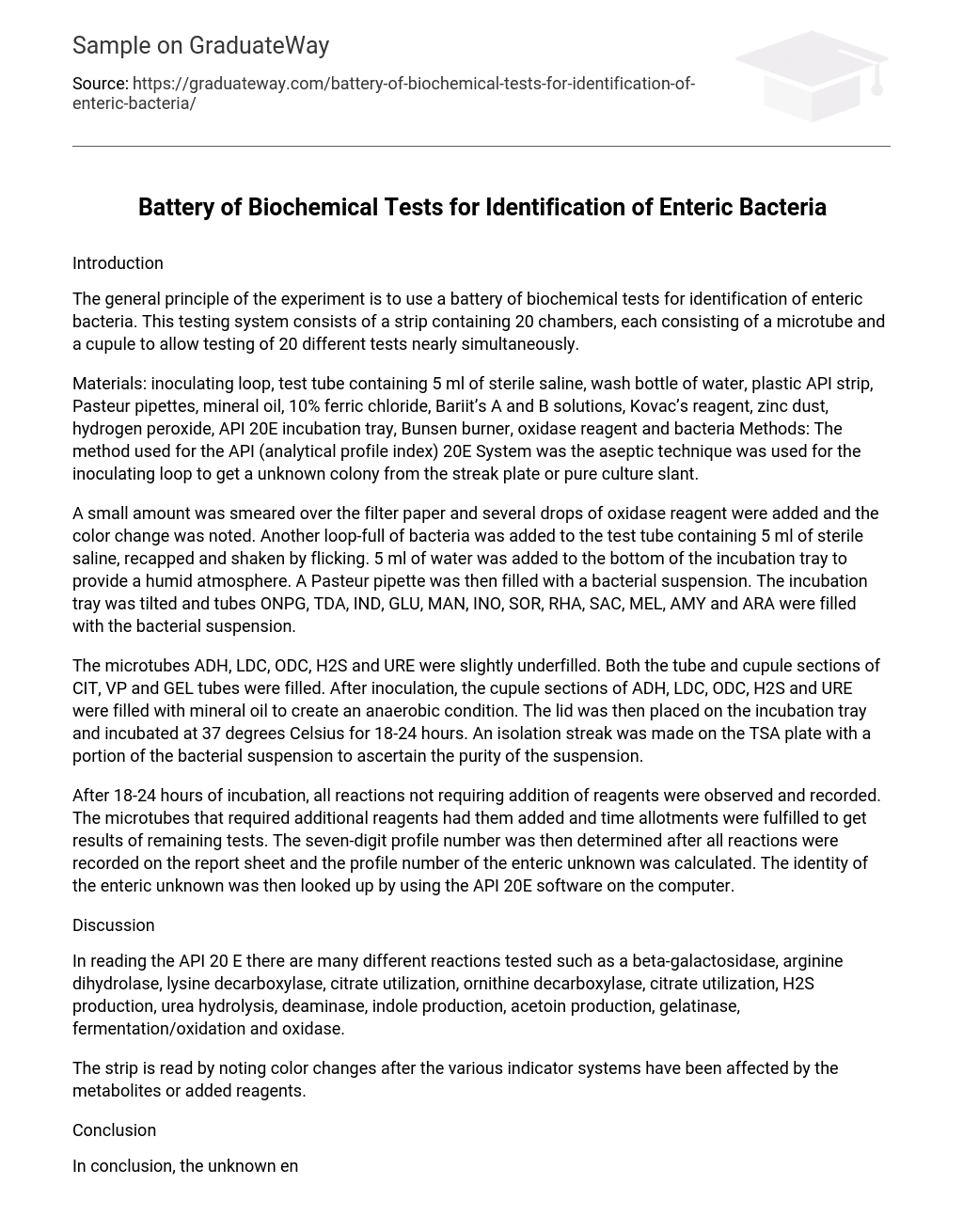Introduction
The general principle of the experiment is to use a battery of biochemical tests for identification of enteric bacteria. This testing system consists of a strip containing 20 chambers, each consisting of a microtube and a cupule to allow testing of 20 different tests nearly simultaneously.
Materials: inoculating loop, test tube containing 5 ml of sterile saline, wash bottle of water, plastic API strip, Pasteur pipettes, mineral oil, 10% ferric chloride, Bariit’s A and B solutions, Kovac’s reagent, zinc dust, hydrogen peroxide, API 20E incubation tray, Bunsen burner, oxidase reagent and bacteria Methods: The method used for the API (analytical profile index) 20E System was the aseptic technique was used for the inoculating loop to get a unknown colony from the streak plate or pure culture slant.
A small amount was smeared over the filter paper and several drops of oxidase reagent were added and the color change was noted. Another loop-full of bacteria was added to the test tube containing 5 ml of sterile saline, recapped and shaken by flicking. 5 ml of water was added to the bottom of the incubation tray to provide a humid atmosphere. A Pasteur pipette was then filled with a bacterial suspension. The incubation tray was tilted and tubes ONPG, TDA, IND, GLU, MAN, INO, SOR, RHA, SAC, MEL, AMY and ARA were filled with the bacterial suspension.
The microtubes ADH, LDC, ODC, H2S and URE were slightly underfilled. Both the tube and cupule sections of CIT, VP and GEL tubes were filled. After inoculation, the cupule sections of ADH, LDC, ODC, H2S and URE were filled with mineral oil to create an anaerobic condition. The lid was then placed on the incubation tray and incubated at 37 degrees Celsius for 18-24 hours. An isolation streak was made on the TSA plate with a portion of the bacterial suspension to ascertain the purity of the suspension.
After 18-24 hours of incubation, all reactions not requiring addition of reagents were observed and recorded. The microtubes that required additional reagents had them added and time allotments were fulfilled to get results of remaining tests. The seven-digit profile number was then determined after all reactions were recorded on the report sheet and the profile number of the enteric unknown was calculated. The identity of the enteric unknown was then looked up by using the API 20E software on the computer.
Discussion
In reading the API 20 E there are many different reactions tested such as a beta-galactosidase, arginine dihydrolase, lysine decarboxylase, citrate utilization, ornithine decarboxylase, citrate utilization, H2S production, urea hydrolysis, deaminase, indole production, acetoin production, gelatinase, fermentation/oxidation and oxidase.
The strip is read by noting color changes after the various indicator systems have been affected by the metabolites or added reagents.
Conclusion
In conclusion, the unknown enteric bacterium was identified as Serratia marcescens with a seven-digit profile number of 7307741. The Nitrate reduction test was negative for gas therefore positive for Nitrate reduction. The Catalase test was also positive breaking down the H2O into O2.





